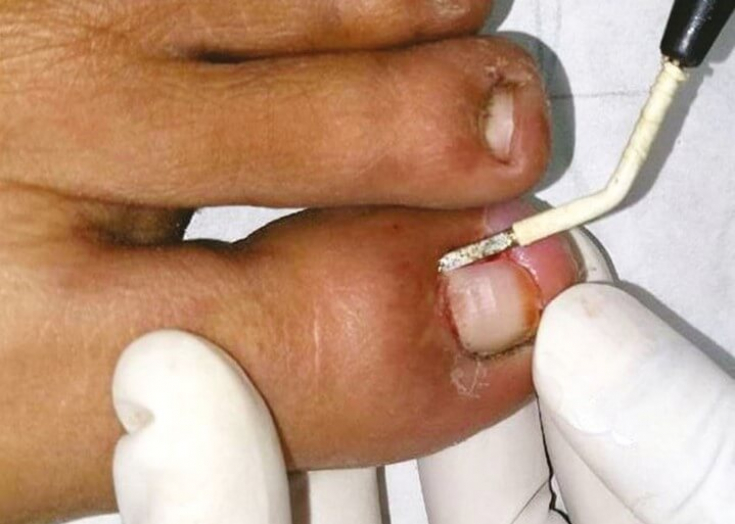Ingrown toenail is one of the most common nail diseases that negatively affects the patient's quality of life.
Conventional surgery involves partial nail detachment with chemical matrixectomy, but this technique has a relatively long recovery period.
Doctors from India Archana Singal and Ishmit Kaur attempted to study the efficacy and safety of radiofrequency for matrixectomy.
For more information about the study and the results of therapy, read on the estet-portal.com in this article.
- Ingrown toenail treatments and their disadvantages
- Research application of radiofrequency for matrixectomyand
Ingrown toenail treatment methods and their disadvantages
Ingrown toenail, also known as onychocryptosis, is a common disease affecting the big toe.
Onychocryptosis is accompanied by pain and swelling, which has a significant negative impact on quality of life.
Most cases of ingrown toenail severity 1 can be treated conservatively with anti-inflammatory drugs with or without antibiotics.
However, a significant proportion of patients with grade 2 severity, especially those with recurrent episodes, and grade 3 and 4 patients require surgery.
Read also: Modern methods of diagnosis and treatment of onychomycosis
One of the most common surgical interventions is partial nail removal with chemical matrixectomy using 88% phenol, trichloroacetic acid (100%) or sodium hydroxide (10%).
Although chemical matrixectomy is a simple and inexpensive technique, the healing time after it is performed is relatively long, which causes additional discomfort to the patient.
Mechanical matrixectomy can also be performed with CO2 laser and cryotherapy which provide more efficient and selective destruction of the matrix of the nail than chemical matrixectomy.
However, these methods are quite expensive to use.
The high cost of the laser, long healing times and poor cosmetic results limit the use of this technique.
That is why Indian doctors Archana Singal and Ishmit Kaur tried to study the efficacy and safety of radio frequency for matrixectomy.
Read the most interesting statsin Telegram!
Research application of radiofrequency for matrixectomy
Eight patients with 10 ingrown toenails (grade 2) were selected.
partial nail detachment with matrix RF ablation.
The RF electrode was placed on the side over the nail matrix for 3-5 s two to three times.
The patients were seen at regular intervals.

RF ablation for partial matrixectomy using a tungsten electrode
Results: The average number of days required for post-procedure healing was 7.5 days.
Significant improvement was observed in terms of erythema, pain as well as edema within 4 days after surgery.
None of the cases experienced any side effects or relapses within 3-5 months of follow-up.
Conclusion: Matrixectomy with radiofrequency ablation is a safe and effective method of partial matrixectomy with fewer complications and less recurrence.
Therefore, it can be used as an alternative method in the surgical treatment of ingrown toenails.
Causes of exfoliating nails and methods of treatment







Add a comment